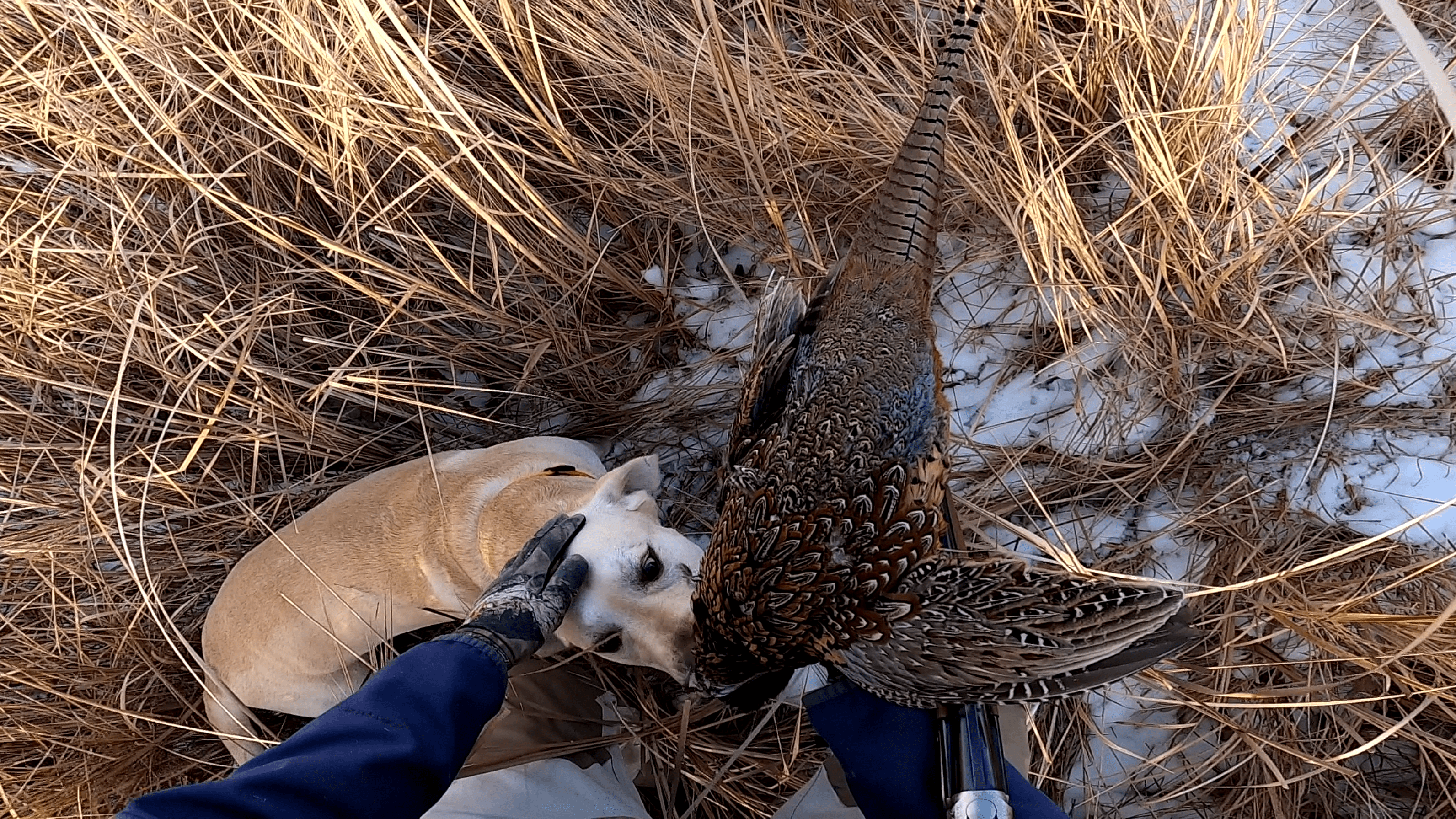
The author’s lab, Ole, retrieves a late season rooster from a cattail slough. Simonson Photo.
By Nick Simonson
Give me an expanse of cattails in December with a little snow on the ground and a lot of pheasants scattered throughout it, and that’s about the best gift the outdoors can provide.
Even in those years where I did not yet have a dog, I can recall serving as my own flushing machine, stomping over the three-toed tracks of pheasants weaving through a frozen slough. My buddies were often content to hug the edges, but I enjoyed the sweat-inducing high-kneed tromp through the crackling reeds and, more importantly, the excitement of a flushing rooster that often resulted.
Even now, when my dog is hard on those same trails of frozen tracks, and when his tail gets going while his nose vacuums up the fresher ones imprinted in the powder of the small openings, I’m right there behind him, content to be in the thick of it, sweating it out with my thumb on the safety. When the crash and crackle give way to a slight stillness and only the tick-tick-ticking of his tail, I know something’s about to happen. Like the clock on a time bomb, it is often only a few seconds before the beige canopy blows up in a blur of wings and explosion of fluff as a rooster takes to the sky, forced from his hiding spot in the slough.
Sure it’s work, but it’s well worth it. I’ve never shied away from the challenges the outdoors brings. From hauling stands for deer hunting on my back from one draw to the next in the heat of summer, to stomping up a sweat in the chill of early winter, the equity earned in the process of putting in the time and effort is dividends paid in close encounters and memorable shots. I often consider such adventures my second workout of the day and let the minute and calorie rings roll on my wristwatch accordingly. By the end of a day with a few thrashings through the thick stuff, I’ve often amassed more on both than what came from my morning run.
But it isn’t all just brute force in those frozen backwaters either. There’s a science to the stomping. Just like pheasants relate to the edges between their home fields, grasses and those thicker areas, there are edges within those larger expanses of cattail flats where the birds seek thermal cover. Trails form through usage by deer, coyotes, birds and other critters, and some get used more than others. Those superhighways under the cover of matted reeds that have hardened tracks which have thawed and refrozen and have newer markings in fresher snow around them are the ones my dog and I follow, seeking the makers of those latter marks. Additionally, the cattails often open into areas of snow-covered frozen surface, where birds can land and take off, sun themselves or simply find a spot to look and listen.
There, the marks of tails and wings suggest a recent landing and a starting point for a new chase.
With some experience, the ebb and flow of the thickness of a given slough provides clues as to how pheasants move through it in late season, and the advantage they may have had of hopping over the wetter areas that would flood hunting boots and soak field pants has waned for those willing to hit the thick stuff and provide pursuit this time of year. Picking out those side trails, areas of easier movement, or those denser stands which provide cover from the pheasant’s predators above, gives clues that pay off, walk-after-walk, stomp-after-stomp, season-after-season.
Perhaps the best part of the thick stuff is that there’s an even greater chance to have it all to yourself this time of year. Something about that extra work required of smashing through it keeps the tennis-shoed hunters of early season away, and the challenges of winter’s chill take care of some of even our most devout upland brethren. Further, there’s a likelihood that because of its nature and a walkability that only comes with cold weather, it’s virgin territory for the season and may only have been hit a few times – and likely only by last month’s deer hunters on the trail of a swamp-loving buck.
In the end, getting into the thick of it is what defines December pheasant hunting.
The challenge is there, but so are the birds and the energy expended in the toughest territory of the uplands and the adventure of rousting them from their deepest hiding places is one of the most unforgettable…in our outdoors.
